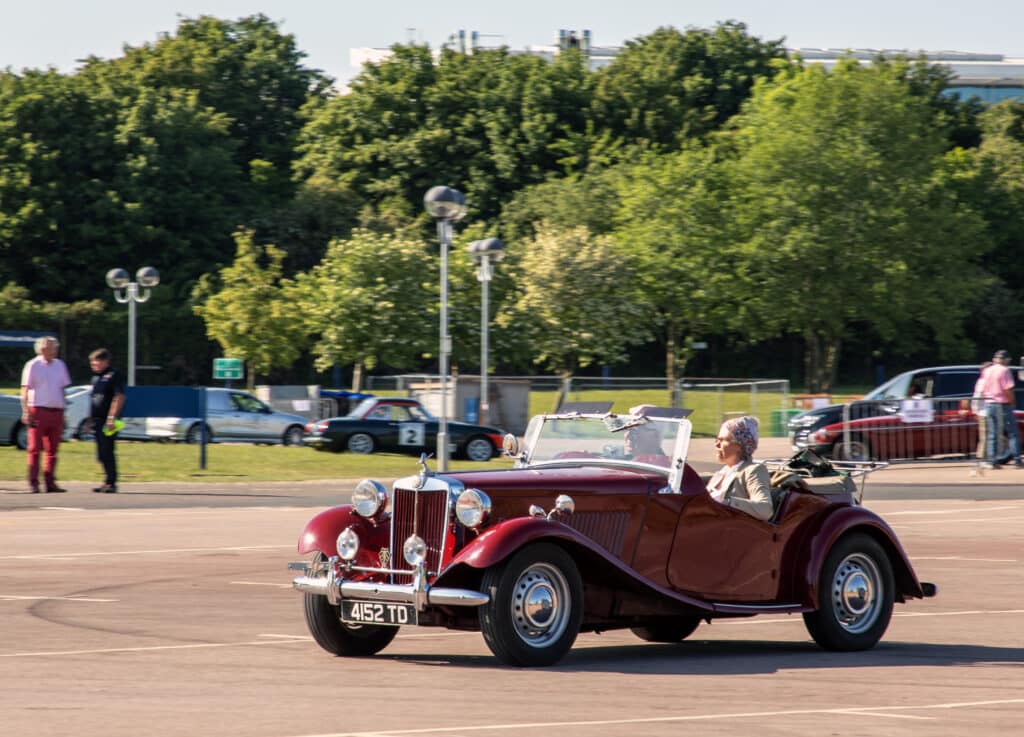MG TD – Octagonal Thinking
As we saw at the end of part 3, MG had an open invitation to create a running mock-up of their idea of what a new Midget for the 1950s should be, but first they had to work out what they thought that was.
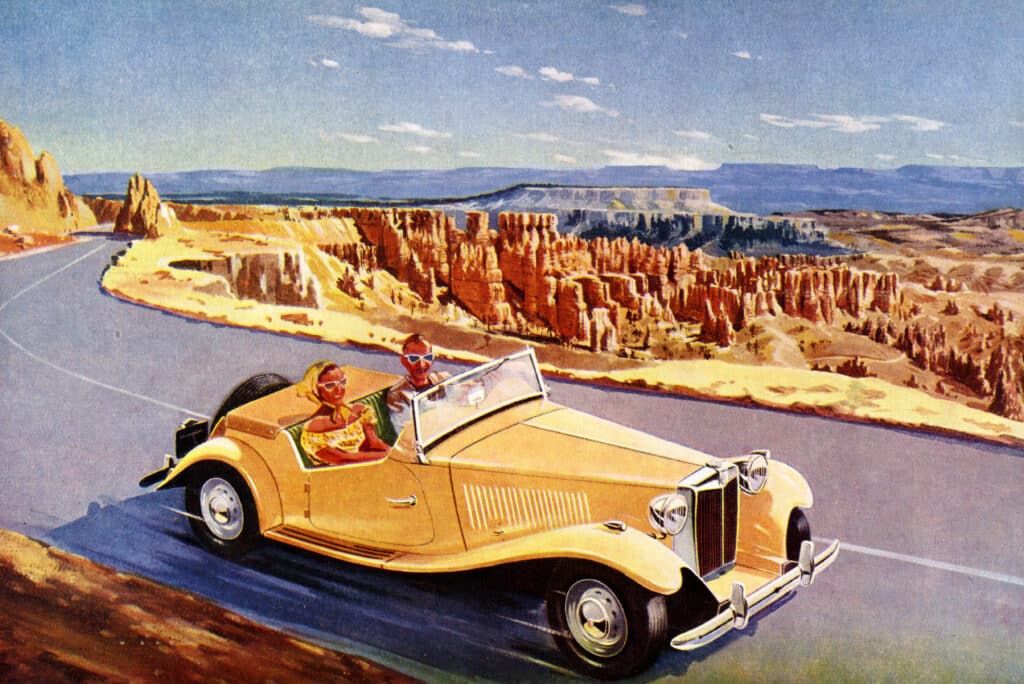
MG TD Midget brochure
First Principles
The Abingdon team, John Thornley, Syd Enever, Cecil Cousins, Alec Hounslow, and Henry Stone, started by defining the problem: What did they want the new Midget to be like?
Their answer was a car which:
- retained the ‘Abingdon touch’
- had some similarity in styling
- could be built in both right and left-hand drive
- had independent front suspension (IFS)
- accurate steering
- was mechanically up to date and justified the ‘Safety Fast’ slogan.
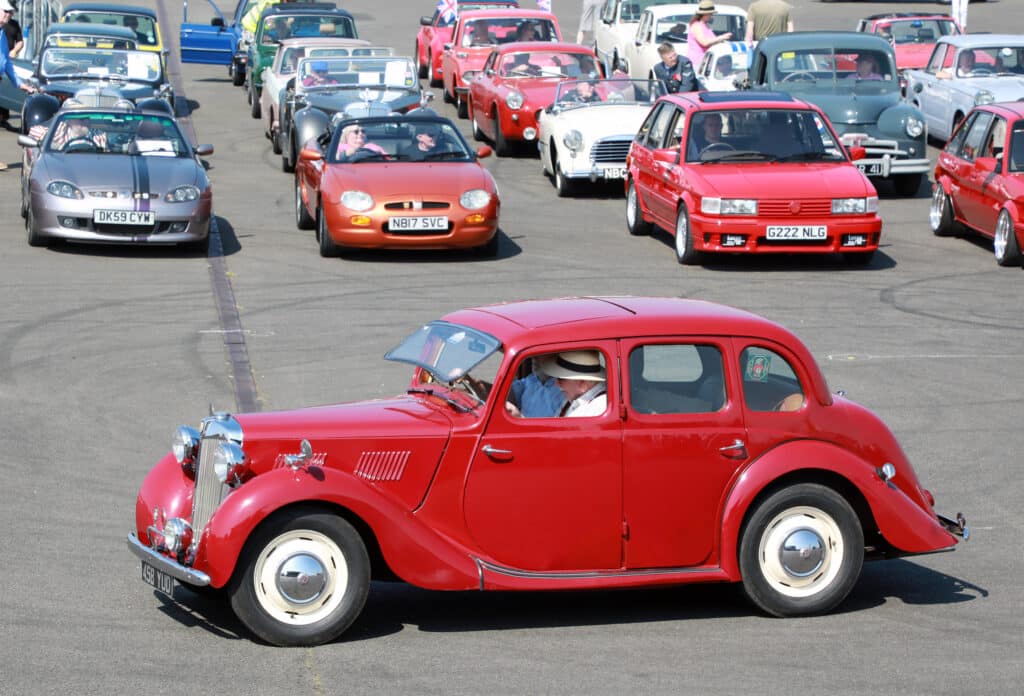
That makes good sense, but they also had to be sure that the Nuffield Group boardroom would back the project financially and give them detailed design support, so they had to use as many existing parts as possible. The logical place to start was, therefore, the MG Y-type saloon and tourer, which was in production. It also shared the TC’s engine, which they already knew would have to be carried over to the new car for economic reasons.

Build Something!
MG’s tiny experimental shop thus got busy and two weeks later had produced a very rough prototype. Aware that the car served more as a direction indicator rather than a serious prototype, it was reportedly quite visually challenging. Unfortunately, no pictures of this life-size ideas board have survived; only the testimony of those involved remains. The working method was quite simple. The team started with a Y-Type saloon chassis and shortened its wheelbase, although reports vary as to how much, from 5 inches to 12 inches!
The wider Y-Type track was retained, as was the saloon’s gearbox and rear axle, but they did fit a more highly tuned TC-sourced XPAG engine. A TC body was then hurriedly modified so it could be crudely fitted to the wider frame. No driving development was done but it did enough to show Nuffield head office what MG themselves thought their next car should be like.
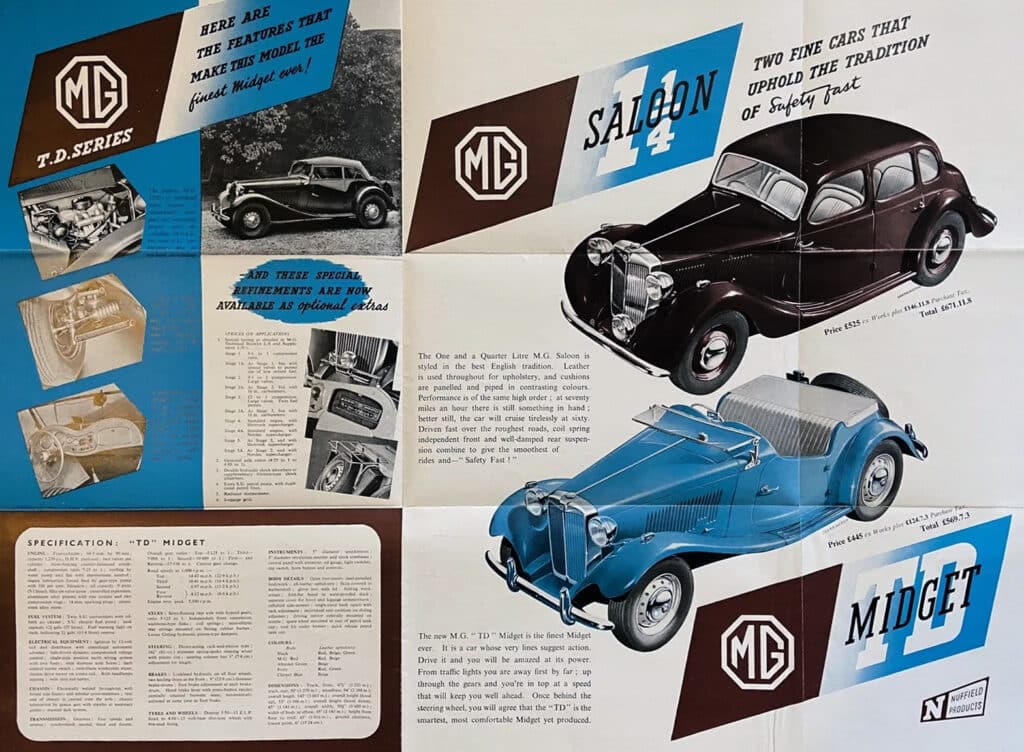
After the famous ‘Something Like That’ presentation at Cowley, the car was taken back to Abingdon and refined for another two weeks then presented again, at which point the board relented and assigned the project a code number, DO968. The TD project was at last beginning in earnest but that didn’t mean that control had passed to Abingdon, they had neither the staff nor the facilities to design a new car.
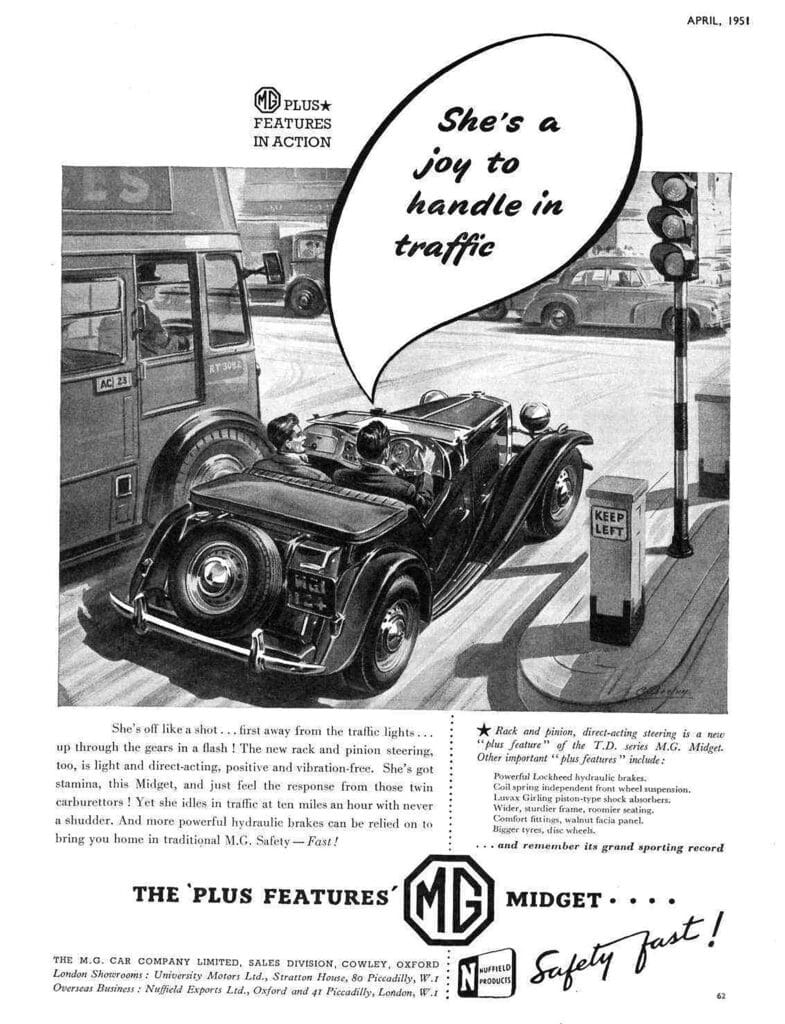
The Design Process
The entire car was designed and developed at Cowley with MG only being involved as the design stage neared fruition. Jack Daniels, who is better known as having worked with Issigonis on both the Morris Minor and the Mini, drew up a chassis that was inspired by the Y-type, used similar box section side members, and borrowed its front suspension and cradle. It was totally different in all its pressings however, and the idea that the TD used the Y-type chassis is a myth that presumably stems from the crude mock up car. Daniels’ new chassis design was much wider than the TC’s, giving the TD a front track 2.5” wider and a massive 5” wider at the rear. It was also much more rigid than a TC chassis but used the same 94-inch wheelbase, which is 6” shorter than a Y-Type saloon. It differed from its saloon inspiration and all previous Midgets in that the frame swept up and over the rear axle. The new underslung-axle arrangement allowed greater rear-axle bump movement allowing the suspension to be softened considerably, improving the ride.
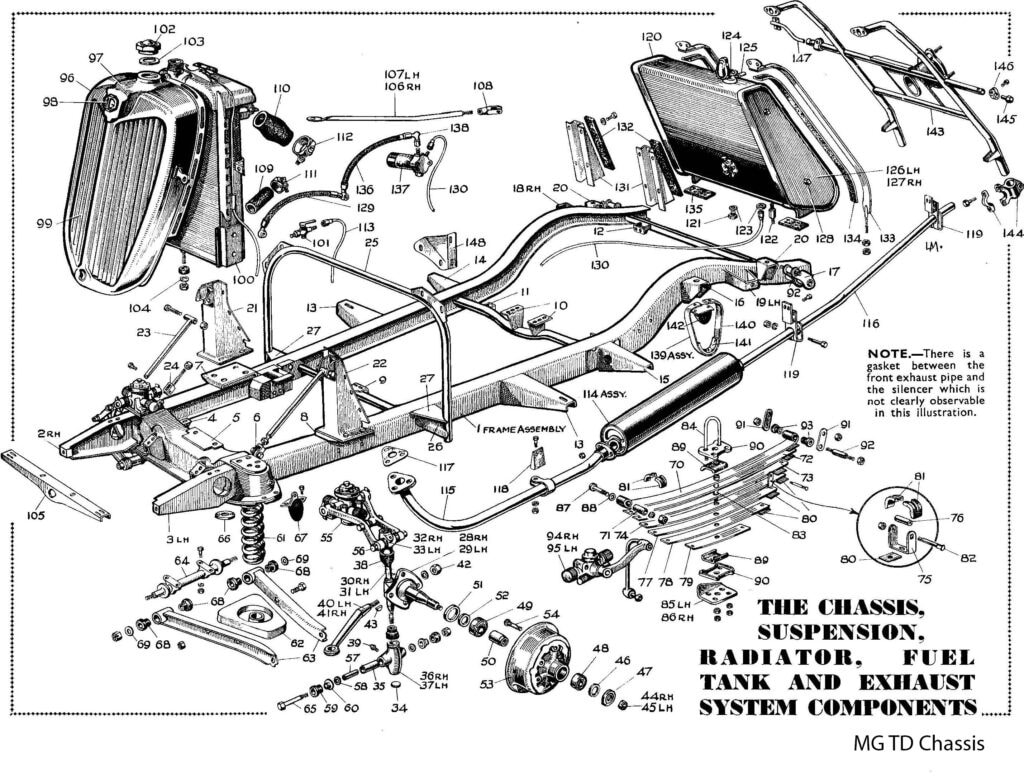
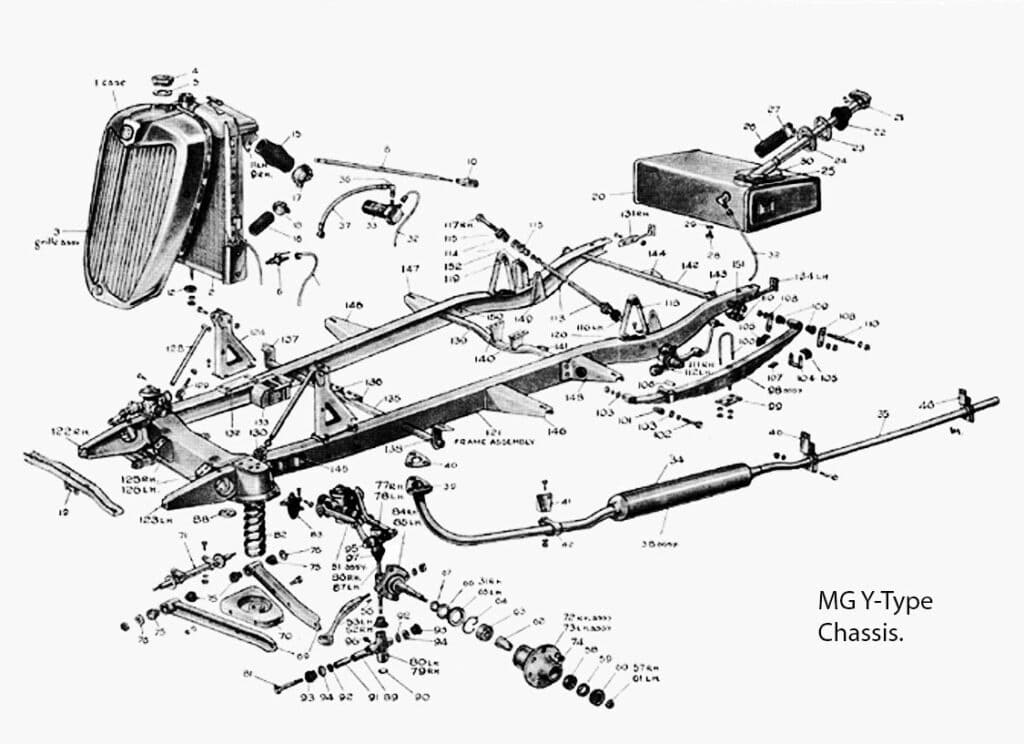
The body was also designed at Cowley by Jim O’Neill, who had just returned to Nuffield after over a year spent working under Dick Burzi at Austin, during which period he’d worked on the design details of the Austin A90 Atlantic. It seems the Nuffield group were not really that interested in MG because no one ever came over to ask how the body design of project DO968 was progressing, as Jim told historian David Knowles some years ago. ‘Vic Oak, the technical director at Cowley, used to go around all the Morris drawing boards, but he never even stopped to look at my drawing. I concluded that Morris Motors were just not interested in MG. As the project neared completion, John Thornley, who was then MG’s service manager, came to look at the progress, and in the same interview, Jim remembered being impressed by his knowledge and enthusiasm, saying, ‘he asked me to lower the tonneau line by half an inch. This would reduce the height above the rear wing and gave an even more squat appearance. It improved the shape considerably.’ Jim was pleased to at last find someone who was interested in what he was trying to do.
This image, from the official dealer-issue workshop manual, shows a TD body being fitted to a chassis on the production line.

Prototype.
The prototype body and chassis were mated together into car 1 and the initial reports were that the handling and general road manners were good. The biggest issue was that it was impossible to read the instruments at any speed because of the scuttle shake in the body. Jim, then just 28 and having just done his first overall design, was devastated, but colleague Tom Ramsey suggested they weld a 3mm plate vertically from the chassis to the body dash. This initial fix had 12” hole cut in it for the driver’s legs and totally cured the scuttle shake. On the production cars, it was substituted by a tubular steel hoop, which worked equally well but which MG then actively sold in their advertising material as a safety feature.
MG were ready to put the TD into production and we’ll find out about that in part 5.
